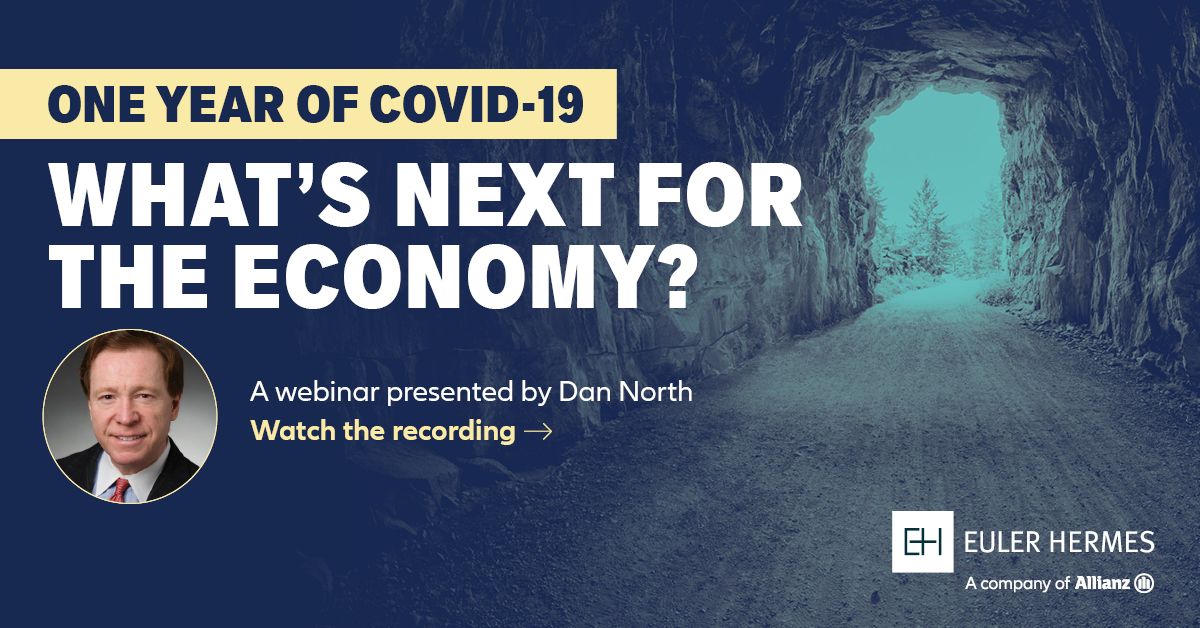Recorded: March 2021
We’ve reached the one-year mark of the global pandemic that changed everything. We have had to pivot and get creative on how to move forward in the face of rapid change. Now that we’ve adapted and taken control of what we could, a year later we find ourselves wondering, what’s next for the economy? And what does it mean for businesses?
During our recent webinar, “One Year of COVID-19: What’s Next for the Economy?” we addressed those questions. Our North American Chief Economist, Dan North, talked through his outlook for 2021, the current vaccine rollout, and developments in consumption, housing, manufacturing, and employment.
He also answered a few of our participant’s questions—ranging from housing to projected impacts. Read below for an overview.




